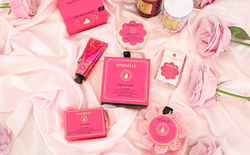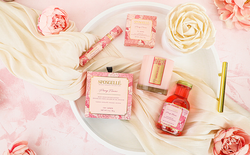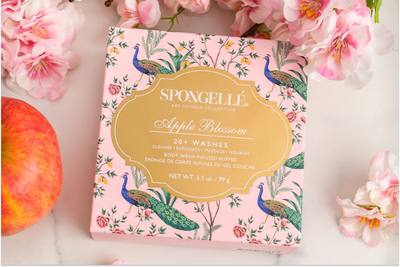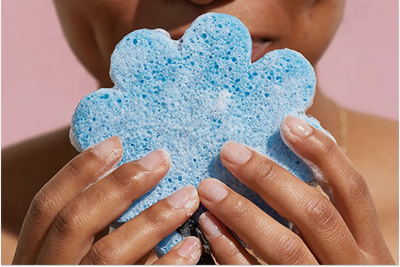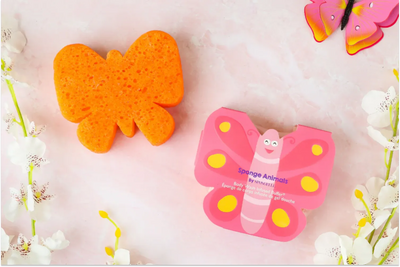When you're having hair ripped off your body, preparation is key. Waxing is a popular method for hair removal since it provides long-lasting results. Whether getting a Brazilian, leg wax, or underarm wax, getting your skin ready will make it a more comfortable experience.
Many people underestimate the importance of prepping for a wax, but neglecting this step can lead to a painful and unsatisfying outcome. You're in the right place if you don't know where to start. We will cover everything you need to know about how to prep for a wax, from the types of waxing to the pre-waxing process and post-waxing care.
Whether you're a waxing newbie or a seasoned pro, this guide will help you achieve a smooth and stress-free waxing experience.
What Are the Different Types of Waxing?
Before going over the pre-waxing process, it's important to understand the different types of waxing available. Here are the most common types of waxing.
Strip Waxing
This type of waxing may be what first comes to mind. It involves applying a thin layer of wax on the skin, placing a strip on top, and then removing it in the opposite direction of hair growth. Strip waxing is popular for removing hair on large areas of the body, like the legs, back, and arms.
Hard Waxing
Hard waxing is a gentler alternative to strip waxing. It involves applying a thick layer of wax on the skin, allowing it to harden, and removing it without using strips. Hard waxing is less painful than strip waxing because the wax only sticks to the hair, not the skin. It's ideal for sensitive areas such as the bikini area, face, and underarms.
Sugaring
Sugaring uses a sugar paste to remove body hair. The paste is made out of sugar, lemon juice, and water. The paste is applied to the skin cold and then removed in the direction of hair growth. Similar to hard waxing, the sugar paste only adheres to the hair and not the skin.
It's an even gentler alternative than hard waxing because waxing removes hair in the opposite direction of growth, which can break the hair follicles in half.
Brazilian Waxing
A Brazilian wax involves removing all of the pubic hair. It's a popular choice for those wanting a completely smooth look. Depending on personal preference, Brazilian waxing can be done with strip waxing, hard waxing, and sugaring.
Waxing or sugaring these areas will get rid of hair that's hard to reach with a razor, plus you won't have to worry about razor burn! The results of a Brazilian wax last two to three weeks.
What Are Some Pre-Waxing Tips?
Before your waxing appointment, there are a few essential things to know. These tips will help you get the best results possible.
Exfoliate
Exfoliating your skin before your waxing appointment is vital. It removes dead skin cells that clog your hair follicles, making the hair easier to remove. You'll want to avoid exfoliating the day of your appointment since it can make your skin more sensitive and increase the risk of irritation.
Avoid Sun Exposure
Speaking of sensitivity, you'll want to avoid sun exposure or tanning beds for at least 24-48 hours before your waxing appointment. The sun's UV rays can make your skin sensitive, and the last thing you'll want to get is waxed if you're sunburnt.
Check Hair Length
Your hair has to be a certain length to be waxed. If it's too short, the wax won't be able to adhere to it fully, leaving a patchy appearance. Super long hair can make waxing more painful, but you can still get it done. You generally want to let your hair grow to at least a quarter of an inch before your appointment.
Avoid Caffeine and Alcohol
Avoid drinking caffeine or alcohol before your appointment. These drinks can both increase skin sensitivity and make the experience more painful. Instead, drink plenty of water to keep your skin hydrated and nourished.
Deal With Ingrown Hairs
Ingrown hairs occur when removed hair grows back downwards instead of out. Shaving, tweezing, and waxing can all lead to ingrown hairs. However, waxing done correctly doesn't usually lead to ingrown hairs.
If you get ingrown hairs, consider using an exfoliating scrub or a product containing salicylic acid to prevent them from occurring. You can also use a warm compress to soften the skin and bring the ingrown hair closer to the surface.
Pain Management
If you have sensitive skin or a low pain tolerance, consider taking aspirin or ibuprofen 30 minutes before your appointment. The aspirin or ibuprofen will reduce pain and make it a more comfortable experience. Always consult your doctor before taking any medication.
What Should the Pre-Waxing Process Include?
Your wax is a few days away, and it's time to begin your pre-waxing process. Here's a step-by-step guide on how to prep for a wax.
Exfoliate
A few days before your wax, exfoliate the area. You can use an exfoliating mitt, granulated scrub, or exfoliating sponge. Allow the hair follicles to soften by waiting for a few minutes after you get in the shower. Get your sponge or exfoliator wet, and using mild pressure, begin making circular motions over your skin. Rinse the area after you're done and pat dry.
Cleanse Your Skin
On the day of your waxing appointment, make sure that your skin is clean and free of any lotions, oils, or makeup. You can use a gentle body wash to rinse away any dirt or products on your skin. Spongellé's body wash-infused buffers will leave you with clean, nourished skin.
Avoid Moisturizers
While moisturizing after showering is normally important, avoid applying moisturizers or lotions to the area that will be waxed on the day of your appointment. These products can interfere and make the wax less effective.
Dress Appropriately
Dress for your appointment in comfortable, loose-fitting clothing. Tight clothes can rub and irritate the waxed area. Also, if you're getting your bikini area waxed, wear underwear that you don't mind getting wax on.
Take Pain Relievers: If you're feeling anxious about the pain, consider taking a pain reliever such as ibuprofen or aspirin 30 minutes before your appointment.
Communicate With Your Esthetician
Once you get to your appointment, talk to your esthetician about any of your concerns or preferences. For example, if you have sensitive skin, your esthetician may use a different type of wax or adjust the waxing technique.
Relax
As unpleasant as it may feel, try to relax and remember to breathe during the waxing process. Tensing up or holding your breath can make the process more painful. You can even bring headphones to listen to music or a podcast during your appointment.
What Should You Keep in Mind for Post-Waxing Care?
After your waxing appointment, you can take certain steps to help take care of your skin and prevent any irritation, infection, or ingrown hairs.
Here are some post-waxing care tips that you should follow:
- Avoid heat and friction: Don't take a hot shower, bath, or get in a hot tub or sauna for at least 24 to 48 hours after your waxing appointment. You should also avoid working out or doing any activity that can cause friction or sweating, as it can lead to irritation.
- Apply soothing products: Using products that contain ingredients such as aloe vera gel or a post-waxing lotion can help calm any irritation and reduce redness. You'll want to avoid any products containing alcohol or fragrances.
- Avoid sun exposure: You want to stay out of the sun before and after your waxing appointment. You also want to skip the tanning beds for at least 24-48 hours after your appointment. Exposure to the sun or UV rays can make your skin more sensitive and increase the risk of burns or irritation.
- Don't shave or tweeze: Don't shave or tweeze the area for at least two weeks after getting waxed. It takes time for the hair to grow back, and you risk ingrown hairs if you try to remove the hair too soon.
- Exfoliate: Exfoliating the area once a week can help prevent ingrown hairs by removing dead skin cells and unclogging hair follicles. However, don't exfoliate for at least two days after your waxing appointment to avoid irritation.
- Schedule your next appointment: For best results and convenience, schedule your next waxing appointment in advance. Depending on the area waxed and hair growth, you may need to schedule appointments every four to six weeks. Your hair will begin to grow back thinner after several waxing appointments. Waxing will get easier and less painful the more you do it.
Ready for a Wax
A little prep before your waxing appointment can make all the difference. You can ensure comfortable, successful waxing and long-lasting results by taking steps to get your skin ready. Spongellé has the products you need to exfoliate and cleanse before your appointment.
Proper aftercare is also important to avoid irritation and ingrown hair. Remember, communicating with your esthetician is key. They can address any concerns or answer questions.
Sources:
Ibuprofen (Oral Route) Description and Brand Names | Mayo Clinic


